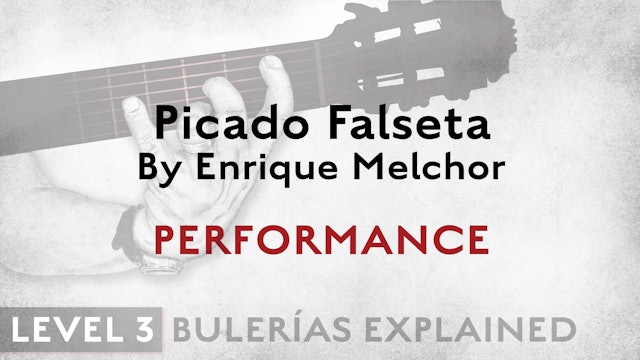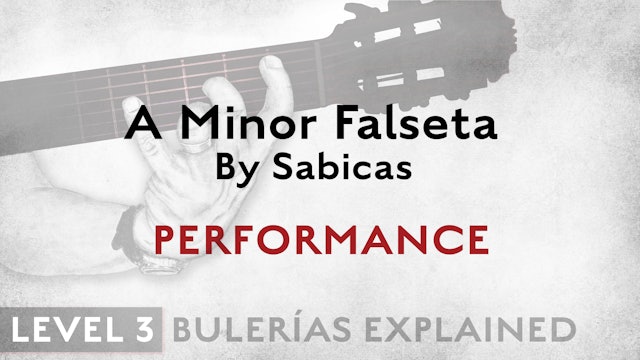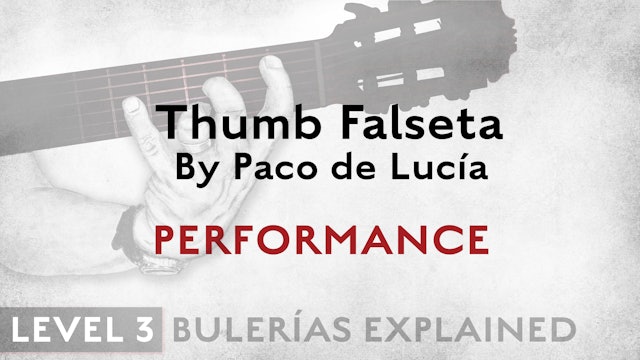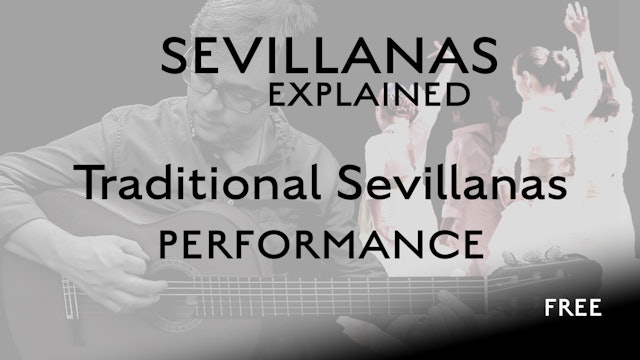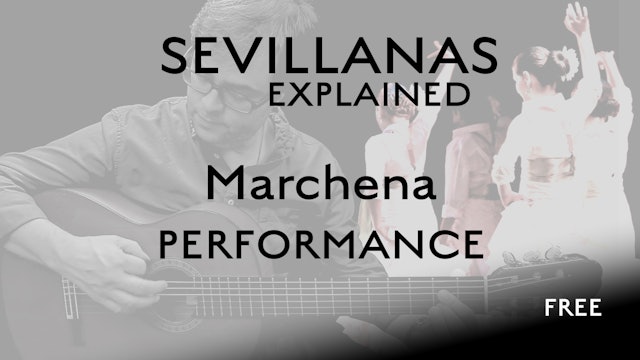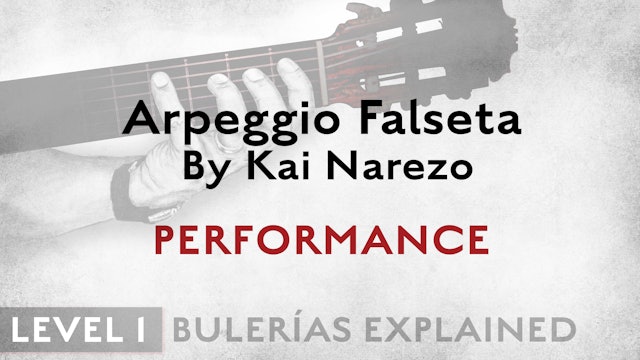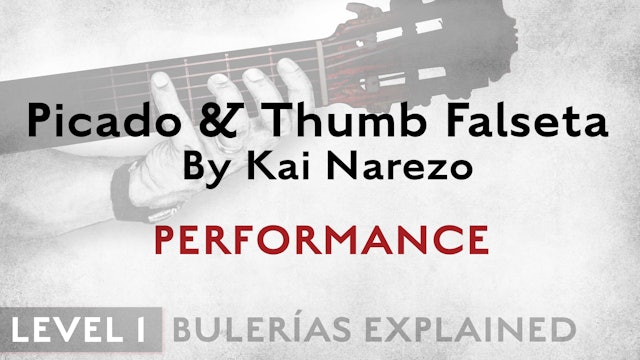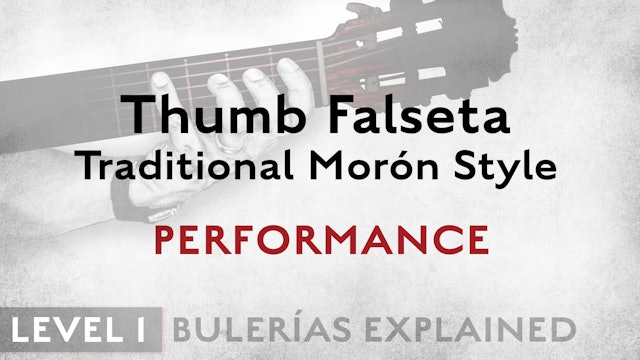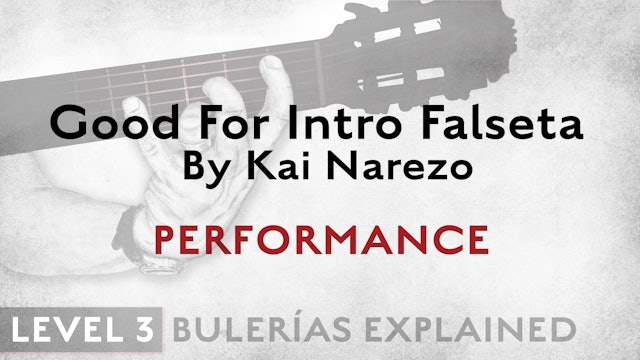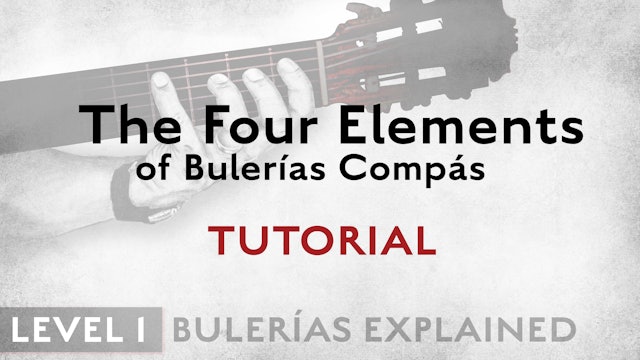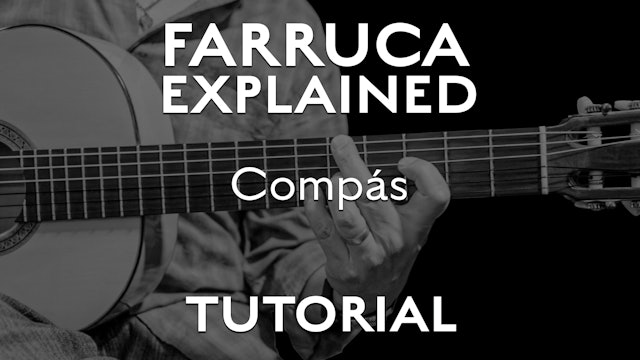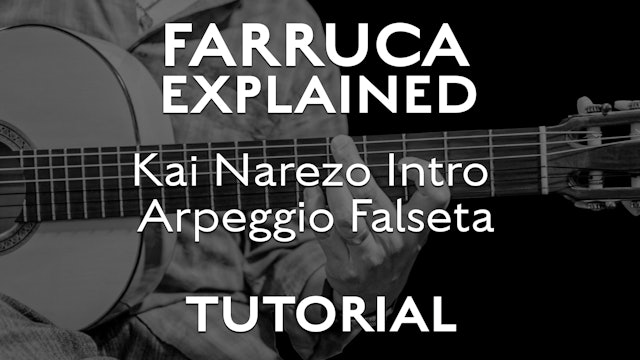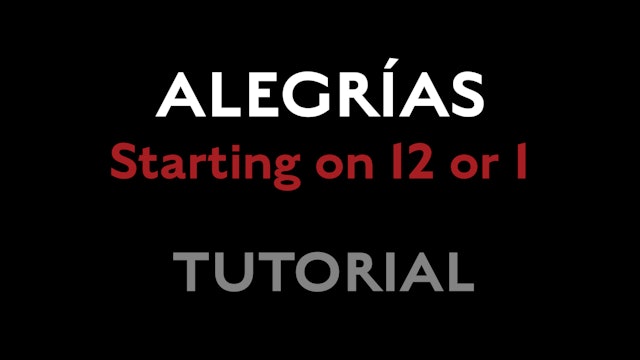-
Bulerias Explained - Level 3 - Picado Falseta by Enrique Melchor - PERFORMANCE
This picado falseta by Enrique Melchor features both the symmetric diminished scale, which is a staple of modern flamenco, and diminished arpeggios, which are somewhat more traditional. You may find you disagree with the fingerings given, which is fine if you find an easier way for you to play th...
-
Bulerias Explained - Level 3 - A Minor Falseta by Sabicas - PERFORMANCE
Sabicas was famous for his minor Bulerías, and this may be his most famous falseta of all. It’s almost all picado in eight notes, and the phrases start on beat 1 and 7 instead of the more common beats 12 and 6.
-
Bulerias Explained - Level 3 - Thumb Falseta by Paco de Lucia - PERFORMANCE
We had to include at least on Paco de Lucia falseta in the course, and this one seems to have been one of Paco’s favorites, given how often he played it. There’s a lot going on, both rhythmically and technically, so take this one slow and make sure you understand where each phrase starts and stop...
-
Bulerias Explained - Level 3 - ArpegScaleThumb Falseta by Kai Narezo - PERFORM
This Bulerías falseta starts out with a Major 7 sound (the Vicente Amigo influence) that combines arpeggio and picado, but it ends with a driving thumb figure that changes the energy of the falseta - and that can also be used on its own.
-
Traditional Sevillanas - Performance
These Sevillanas for solo guitar are great for learning Sevillanas, working on your technique and accompanying dance, too. Learn one at a time, and each one will be easier than the previous one as you get the hang of the structure.
-
Marchena (Sevillanas) - Performance
Four Sevillanas in four different keys (E, A, F# and B phrygian). These Sevillanas are pretty advanced both technically and rhythmically, so you may want to review the Traditional Sevillanas tutorial before tackling this.
-
Bulerias Explained - Level 1 - Arpeggio Falseta by Kai Narezo - PERFORMANCE
A relatively simple falseta that is traditionally phrased with 8th notes starting on beat 12 and ending on beat 6, until the final longer phrase which starts on 12 and end on beat 6 of the next compás.
-
Bulerias Explained - Level 1 - Picado & Thumb Falseta by Kai Narezo - PERFORM
The first Bulerías falseta I ever wrote 🙂 Each phrase is made up of 8th notes that start on 12 and end on 6, so by now it should just be a matter of learning the notes.
-
Bulerias Explained - Level 1 - Thumb Falseta Traditional Morón Style - PERFORM
This is a very traditional falseta in the Morón style (Morón de la Frontera is a town not too far from Sevilla that’s famous for its flamenco). The falseta is relatively simple and involves thumb technique in the right hand and some slurs in the left hand. The phrasing is very traditional and thi...
-
Bulerias Explained - Level 3 - Good For Intro Falseta by Kai Narezo - PERFORM
This Bulerías Falseta combines arpeggio, picado, thumb and some left-hand stretches into a somewhat longer falseta than we’ve seen. It can be used as an introduction but also works anywhere else you’d play a falseta.
-
Bulerias Explained - Level 1 - The Four Elements of Bulerias Compás- TUTORIAL
We look at a new way to organize your thinking about Bulerías compás that makes it easier to stay in compás no matter what.
-
Farruca Explained - Compás - TUTORIAL
We look at where the chords go and a few different right-hand patterns, including some fun syncopated ones
-
Farruca Explained - Kai Narezo Intro Arpeggio Falseta- TUTORIAL
Tutorial for one of Kai's falsetas that features some lovely harmony with arpeggios and ends with some scale bursts.
-
Alegrias - Starting on 12 or 1 - Tutorial
You can start Alegrias compás on either 12 or 1, and learning how to go back and forth easily is an important part of playing compas. This tutorial shows you how to get comfortable switching between the two, and the how to vary your compás.



